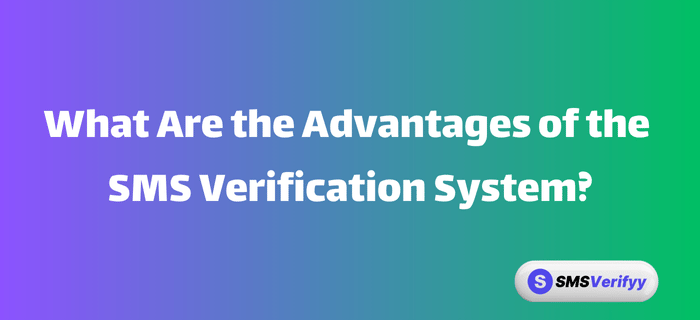
In today's digital landscape, ensuring the security of online accounts and transactions is paramount. One widely adopted method to enhance security is the SMS verification system. This article delves into the benefits of SMS verification, highlighting its role in safeguarding user data and improving user experience.
What Is SMS Verification?
SMS verification is a security process that involves sending a unique code or One-Time Password (OTP) to a user's mobile device via text message. The user then enters this code into the application or website to confirm their identity. This method is commonly used in two-factor authentication (2FA) and multi-factor authentication (MFA) systems to add an extra layer of security to online accounts.
Benefits of SMS Verification
Enhanced Security
Implementing SMS verification significantly reduces the risk of unauthorized access to user accounts. By requiring a second form of authentication beyond just a password, it becomes more challenging for malicious actors to compromise accounts. This added layer of security is particularly effective against phishing attacks and credential stuffing.
Improved User Experience
SMS verification offers a straightforward and convenient method for users to authenticate their identity. Since most individuals carry mobile phones capable of receiving text messages, the process is accessible and does not require additional hardware or complex procedures. This ease of use enhances user satisfaction and encourages compliance with security protocols.
Cost-Effectiveness
For businesses, implementing SMS verification is a cost-effective security measure. It leverages existing mobile infrastructure, eliminating the need for expensive hardware tokens or complex systems. Additionally, the scalability of SMS verification allows organizations to accommodate a growing user base without significant investment.
Broad Compatibility
SMS verification is compatible with virtually all mobile devices, including basic feature phones. This broad compatibility ensures that a wide range of users can benefit from the added security, regardless of their device type. Unlike some authentication methods that require smartphones or internet connectivity, SMS verification only relies on cellular networks, making it accessible in areas with limited internet access.
Common Use Cases of SMS Verification
-
Account Creation and Login: Verifying user identity during account registration and login processes to prevent unauthorized access.
-
Transaction Authorization: Confirming user consent for financial transactions, ensuring that the rightful account holder approves the activity.
-
Password Recovery: Providing a secure method for users to reset passwords by verifying their identity through their mobile device.
-
Preventing Fraud: Reducing the incidence of fake accounts and fraudulent activities by adding an extra layer of verification.
By integrating SMS verification into these scenarios, businesses can enhance security measures and build trust with their users.
Conclusion
The SMS verification system offers numerous advantages, including enhanced security, improved user experience, cost-effectiveness, and broad compatibility. By implementing this method, businesses can effectively protect user accounts and sensitive information from unauthorized access, while providing a seamless and accessible authentication process.